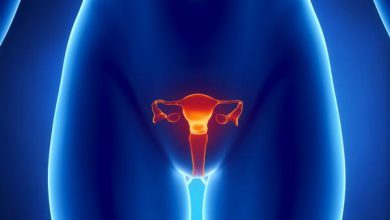Biofortification: The Solution To The Folic Acid Deficit

Even in the 21st century, malnutrition constitutes one of the great burdens of humanity. This refers to the state that is generated as a result of an unbalanced or insufficient diet in nutrients. As for example, the deficit of folic acid.
Malnutrition affects millions of people around the world. It is the leading cause of infant death in developing countries.
In contrast, some regions, especially the wealthiest, are facing a steep rise in obesity.
There are many pathologies associated with nutritional deficiencies, which are accentuated in the most disadvantaged regions.
In this sense, folic acid deficiency is a major problem that especially affects Asian regions. This is because their diet is mainly made up of foods that are poor in this nutrient.
In this article we will talk about the importance of folic acid, and how to solve its deficit.
Importance of folic acid
Folic acid is a water-soluble molecule that belongs to the vitamin B complex. It is also known as tetrahydrofolate or vitamin B9. It is essential to carry out important functions in our body.
Its great relevance lies in the fact that it is necessary for the production and maintenance of new cells. Therefore, it is especially necessary in periods of high rates of cell division and growth. Like childhood or pregnancy.
At the cellular level, it is involved in the synthesis of purines and pyrimidines. In this way, it participates in the metabolism of DNA, RNA and proteins.
It is also important for the proper development of blood cells, like vitamin B12. Since it participates in the formation of the heme group of hemoglobin.
In addition, the functions performed by this vitamin are important for the correct functioning of the cardiovascular system, the nervous system and fetal neurological formation, among others.
Humans obtain folic acid from different sources: animal, plant, and certain dietary supplements.
Its presence in animals is scarce and is located mainly in liver and milk and their derivatives.
On the contrary, the plant kingdom is very rich in this vitamin. Especially in legumes, whole grains, green leafy vegetables, wheat germ and fruits.

Folic acid deficiency
The deficit of folic acid may be due to the fact that the needs of this nutrient are increased. As for example, in the case of pregnancy, or when more quantity is excreted than usual.
However, the most common cause is inadequate daily folate intake due to poor diet.
On the other hand, folic acid deficit mainly affects those areas of active cell division, such as the scalp or bone marrow, resulting in certain types of:
- Anemia.
- Pylosis
- Growth retardation
- Loss of appetite
- Weakness.
- Inflammation.
- Tongue sores
- Digestive and intestinal disorders
- Among many others.
Folic acid is especially relevant for the correct formation of the neural tube in neonates. Therefore, we must emphasize the importance of having adequate levels of this vitamin in women who intend to become pregnant.
Its intake prevents the fetus from a high number of congenital malformations. Among them are spina bifida, hydrocephalus and anencephaly.
Solution to folic acid deficiency

More and more countries are echoing the need to find a solution. This is due to the large number of pathologies that a diet low in folic acid entails.
So far, vitamin supplements in pill form have been successful. against folic acid deficiency. However, its difficult accessibility in less developed countries makes these measures insufficient.
Among the resolution strategies developed by numerous researchers, crop biofortification stands out . This is nothing more than increasing the content of a certain nutrient in a food.
In this case, we are talking about the folic acid content. The synthesis of this molecule in plants takes place in three different cellular compartments: chloroplasts, cytosol and mitochondria.
This vitamin is made up of three pieces. Each one of them is formed in one of these compartments. By increasing its content, we can achieve an increase in the final piece: vitamin B9.
In fact, this is what the scientists deduced. What they did was overexpress each of the genes that give rise to these molecules in rice seeds. Managing to increase the final folic acid content of the seeds up to a thousand times.
Thus, eating less than 100 grams of biofortified rice covers the daily nutritional needs of this vitamin. Which shows the efficacy of this biotechnological solution to the problem of nutritional deficiencies.








